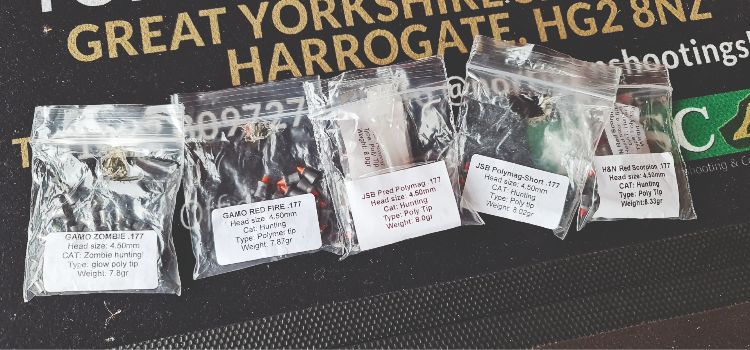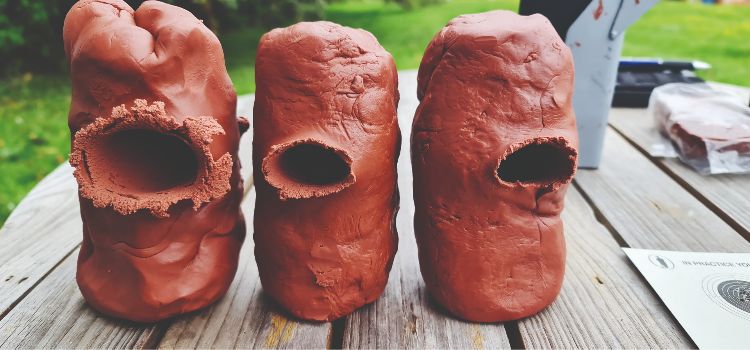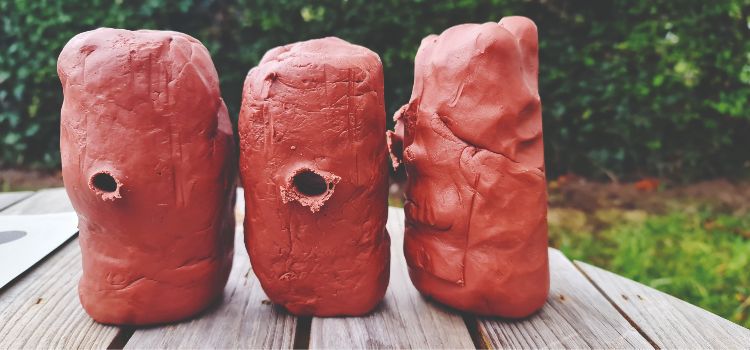If you’re a regular reader or subscriber, you’ll remember that in the last issue, I took a close look at the attributes of pellets with metal tips, where the tip was designed to detach on impact and thus cause greater terminal ballistic damage. This month, I shall be examining pellets of a similar design, but where the pointed tip is plastic as opposed to metal.
The first thing I want to try to understand is why a pellet designer would opt for a plastic tip as opposed to a metal tip, and vice versa. I can only assume that the metal tip offers greater initial penetration before tip separation, whereas a plastic tip might not offer as much initial penetration, but as a lighter pellet, it may offer greater ballistic coefficient through the air. This perhaps lends itself to greater accuracy over range, but also enables a more ready tip separation or deformation, and as such a potentially greater terminal ballistic effect. Only time, and testing will tell, but before we get to the testing, best we have a look at this month’s contestants. All the pellets are in .177 calibre, and as always, I’ll be starting with the lightest and working up to the heaviest.
 Gamo Zombie
Gamo Zombie
This .177 ‘Zombie Hunting’pellet weighs in at 7.8gr, and has a length of 8.75mm. The Zombie is of a fairly classic design, with a high long skirt, which is quite thin at its base to allow for better expansion and grip on the rifling. The high neck and head is topped with a yellowy green, pointed plastic tip which has a greenish luminescence for about a minute when exposed to intense light, which I guess gives it the ‘Zombie Hunting’ credentials. I see this as a bit of a marketing gimmick, and why not? Life can be pretty boring, so there’s nothing wrong with a bit of fun here and there. What concerns me, though, is what appears to be really quite poor production, with some very noticeable casting seams. Whether these will impact on accuracy, remains to be seen.
Gamo Red Fire
If I was feeling a little cynical, although the Red Fire weighs in at 7.87gr, just 0.07gr heavier than the Zombie, and happens to be exactly the same length at 8.75mm, I’d say that the Red Fire was exactly the same pellet as the Zombie, but with a red polymer tip as opposed to a glow-in-the-dark greenish one. On closer inspection, the built quality also appears to be a little better, although, by no means fantastic.
JSB Predator Polymag
The 8.0gr Predator has a length of 8.8mm, and is a little heavier and a little longer than the two Gamo pellets which precede it. It also has a slightly different design, with the skirt tapering upward from the thin-walled hem, to a high narrow waist before the expansion of the head section, within which of course we find the pointed, red polymer tip.
JSB Polymag Short
You may have noticed that for the previous article, and for this one, I have been giving the lengths of the pellets, which is something I haven’t previously done. The reason for this is that pointed tip pellets can, by the nature of their design, be a bit longer than traditional domed pellets, and as a result may not fit into some of the manufacturers’ magazines and loading systems. JSB have recognised this potential pitfall and have made steps to mitigate the issue with the Polymag Short, which as the name suggests, is a shorter version of the Polymag pellet with a length of only 7.4mm. To say this, though, is to do it a disservice because it’s actually a totally different design. Gone is the narrow, cylindrical waist, leaving us with a pellet that looks like a wadcutter with a protruding metal tip, when viewed in profile. Surprisingly, despite its slimming regime and loss of material, the Polymag Short actually weighs a fraction more than the aforementioned predator at 8.02gr. I have to say, I’m really quite excited to see how these pellets perform.
H&N Red Scorpion
To my mind, H&N have always made accurate and good quality pellets, although I might be slightly biased because it was the H&N Match pellet that my FWB 601 preferred and which took me to some success on the target circuit many moons ago. However, for the purpose of this test, I am totally unbiased when it comes to looking at the Red Scorpion – you’ve got to love those name! The Scorpion, as you’ll see from the pictures, has a short, and relatively thick skirt, ascending to a narrow waist section before expansion into the head. The head itself has a forward tapering profile toward the polymer tip, unlike all of the others in this test which present an essentially flat profile. At 8.33gr it’s the heaviest pellet in the test, but has a length of only 8.62mm which plants it firmly in the middle ground when it comes to pellet length. Again, I can’t wait to see how the subtle variances impact upon accuracy and terminal ballistic performance.
 Testing
Testing
As usual, all pellets will be shot from the same Daystate Pulsar airgun, at a distance of about 20m. Testing is separated into two stages; accuracy and terminal ballistic performance. To determine the latter, each pellet will be shot into a 40mm-thick block of warmed terracotta wax, with chronographs positioned to record entry and exit values for both energy and velocity. I will also shoot some of the pellets into a single large block of wax in order to see how the tips separate, and then retrieve the pellets to examine the degree of resultant head expansion.
| Pellet |
Group size |
| Gamo Zombie |
24.54mm |
| Gamo Redfire |
12.57mm |
| JSB Predator Polymag |
12.55mm |
| JSB Polymag Short |
8.01mm |
| H&N Red Scorpion |
19.19mm |
| |
Entry Velocity |
Exit velocity |
Variance |
Entry energy |
Exit energy |
Variance |
| Gamo Zombie |
|
|
|
|
|
|
| Gamo Redfire |
574fps |
0fps |
574fps |
5.76 ft.lbs |
0 ft.lbs |
5.76 ft.lbs |
| JSB Predator Poly |
653fps |
203.5fps |
449.5fps |
7.58 ft.lbs |
0.73 ft.lbs |
6.85 ft.lbs |
| JSB Poly Short |
695fps |
115.1fps |
579.9fps |
8.59 ft.lbs |
0.23 ft.lbs |
8.36 ft.lbs |
| H&N Red Scorpion |
665fps |
162.4fps |
502.6fps |
8.17 ft.lbs |
0.48 ft.lbs |
7.69 ft.lbs |
 Results Analysis
Results Analysis
Actually I’m just going to talk about the Gamo Redfire, but bear with me. When I first saw the results for the Gamo Redfire, I didn’t immediately understand the potential significance. At first, I thought that I couldn’t actually use the results, and there was no data for exit velocity and energy, and no way of making my usual calculations, but then it dawned on me; There was an absence of exit data because the pellet hadn’t escaped the back end of the wax block, so it had surrendered all of its energy and velocity to the material – I thought I might have the perfect pellet in front of me!
In my six years of pellet testing, when I must have shot hundreds of different designs and calibres of pellets into the wax, I have never had a pellet of any type that has surrendered all its energy and velocity to the wax to such an extent that it has been captured within the relatively slim 40mm of the target material. The Red Fire had done just that. It should be the winner – but it isn’t because it didn’t actually arrive with very impressive velocity and energy figures. Although it’s surrendered everything, other pellets that arrived with more have surrendered a little, and have actually bettered the Redfire. ‘Them’s the rubs’, as they say, and if you’re not sure what I’m talking about, have a look at the table which details the terminal ballistic performance, and you’ll begin to understand what I mean.
Conclusion
This month’s testing has been something of a pretty steep learning curve, or to be more honest, it’s been nearly effing vertical. You see, I’ve been doing this pellet-testing lark, or as it is more accurately described, ‘examining the accuracy and terminal ballistic characteristics and performance of pellets’, for nigh on six years, and I’d like to think I’ve got the feel of things. I should have learned from the many bites in the butt that I have experienced in my work, that what you think will happen, doesn’t necessarily happen.
With only 0.53gr separating the lightest from the heaviest pellet in this test I wasn’t really expecting to see massive performance variances. What I had perhaps failed to account for for were the subtle, but seemingly significant differences the varying nose cone designs would have on the results.
As discussed above, I thought I had an outright winner, and perfect pellet when I observed that the Redfire failed to exit the wax material. When I looked at the overall results, though, I realised that even though the Redfire had given its all, other pellets had actually given more – statistically speaking – because they had arrived with more energy, and although they had given some up, as opposed to none, they had actually surrendered less overall.
Despite the small variances in weight, though, there is a stand-out winner, which is the JSB Polymag short. Here we have a pellet which at 7.4mm is very likely able to fit into your magazine – do check, please – but is also able to provide a group size of just 8.01mm at 20m(ish) and had a set of ballistic characteristics of which most pellets would be proud.